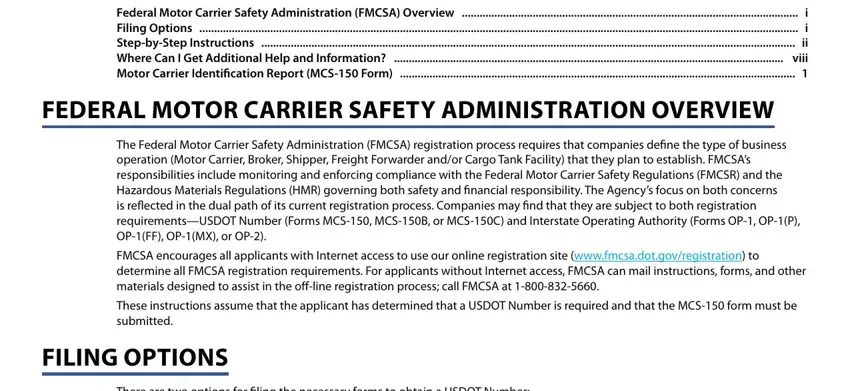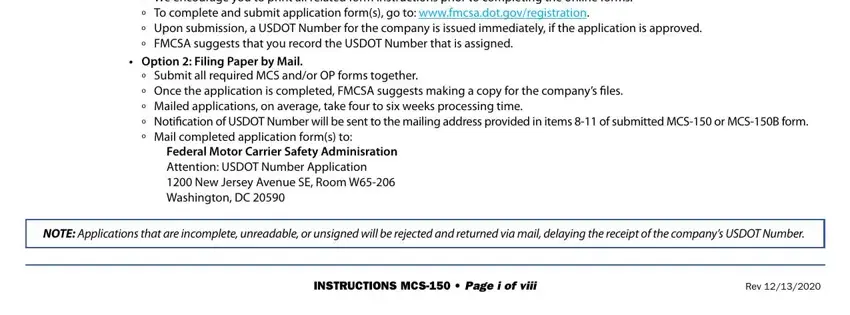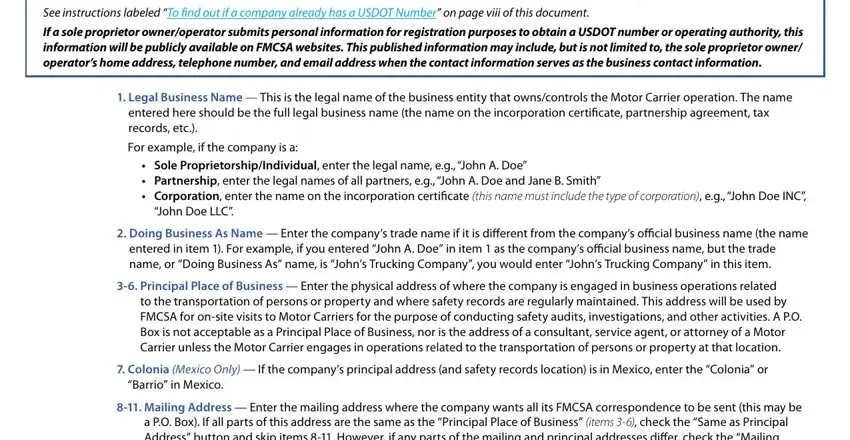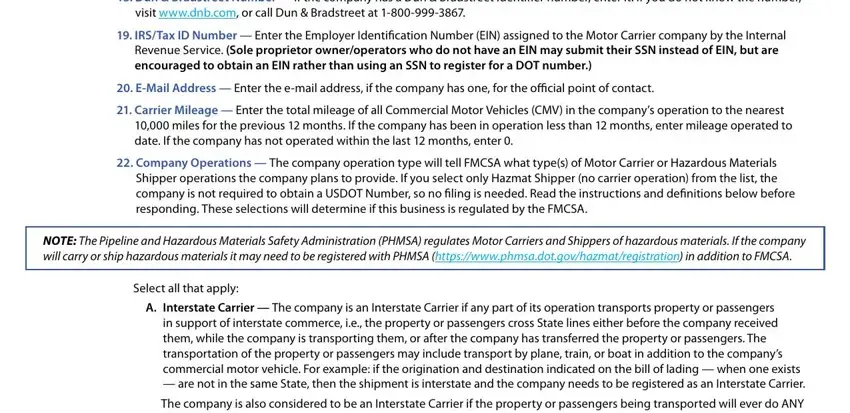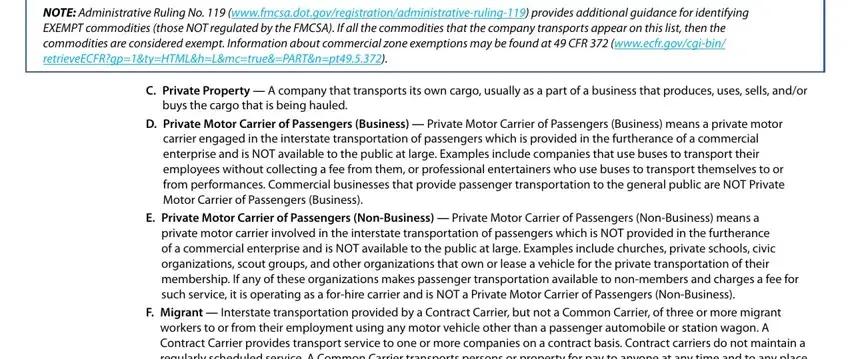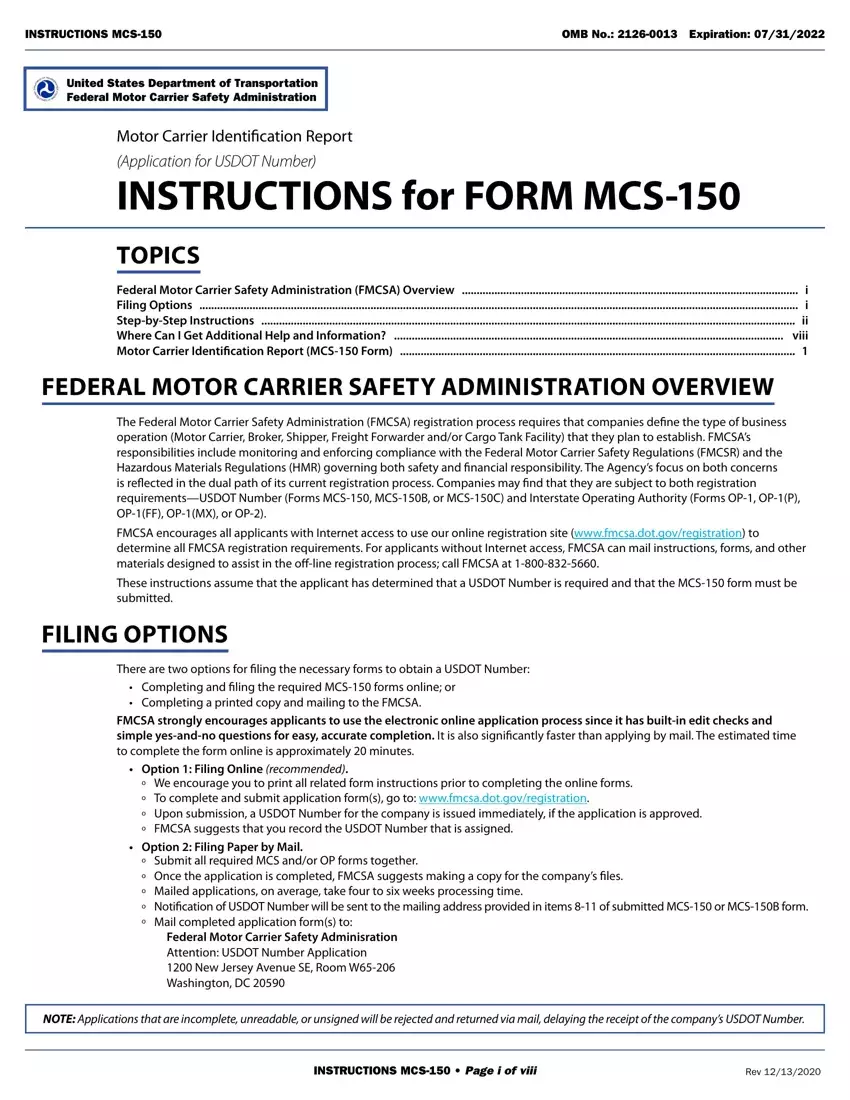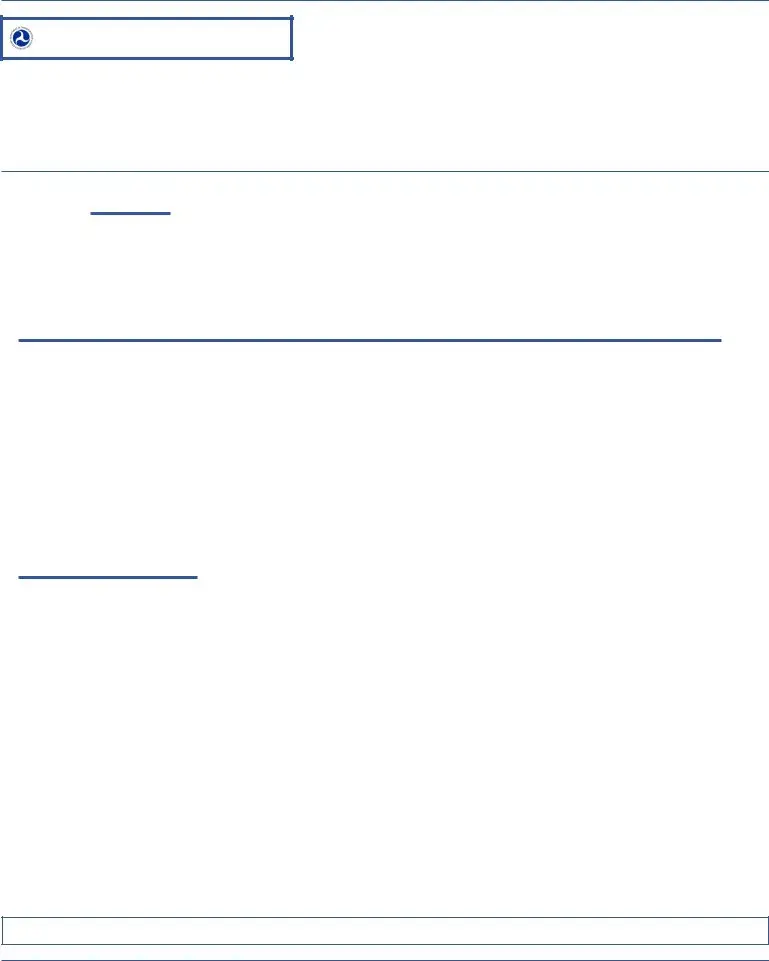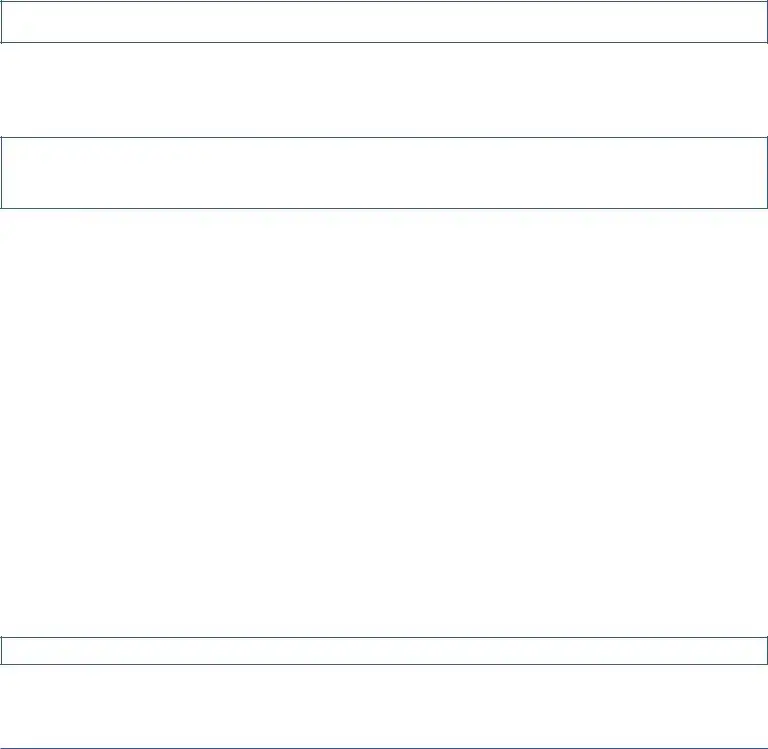INSTRUCTIONS MCS-150 |
OMB No.: 2126-0013 Expiration: 07/31/2022 |
|
|
15.Principal Business Fax Number — Enter the company’s fax number, if any, including area code. If this is the same as the “Principal Business Phone Number” (item 13), enter “Same”.
16.USDOT Number — If the company is not a new applicant (that is, if it already has a USDOT Number) enter the company’s USDOT Number.
17.MC or MX Number — If the company has already been assigned an “MC” or “MX” identification number for Interstate FMCSA Operating Authority, enter the number. This includes MC or MX numbers that are pending.
18.Dun & Bradstreet Number — If the company has a Dun & Bradstreet identifier number, enter it. If you do not know the number, visit www.dnb.com, or call Dun & Bradstreet at 1-800-999-3867.
19.IRS/Tax ID Number — Enter the Employer Identification Number (EIN) assigned to the Motor Carrier company by the Internal Revenue Service. (Sole proprietor owner/operators who do not have an EIN may submit their SSN instead of EIN, but are encouraged to obtain an EIN rather than using an SSN to register for a DOT number.)
20.E-Mail Address — Enter the e-mail address, if the company has one, for the official point of contact.
21.Carrier Mileage — Enter the total mileage of all Commercial Motor Vehicles (CMV) in the company’s operation to the nearest 10,000 miles for the previous 12 months. If the company has been in operation less than 12 months, enter mileage operated to date. If the company has not operated within the last 12 months, enter 0.
22.Company Operations — The company operation type will tell FMCSA what type(s) of Motor Carrier or Hazardous Materials Shipper operations the company plans to provide. If you select only Hazmat Shipper (no carrier operation) from the list, the company is not required to obtain a USDOT Number, so no filing is needed. Read the instructions and definitions below before responding. These selections will determine if this business is regulated by the FMCSA.
NOTE: The Pipeline and Hazardous Materials Safety Administration (PHMSA) regulates Motor Carriers and Shippers of hazardous materials. If the company will carry or ship hazardous materials it may need to be registered with PHMSA (https://www.phmsa.dot.gov/hazmat/registration) in addition to FMCSA.
Select all that apply:
A.Interstate Carrier — The company is an Interstate Carrier if any part of its operation transports property or passengers in support of interstate commerce, i.e., the property or passengers cross State lines either before the company received them, while the company is transporting them, or after the company has transferred the property or passengers. The transportation of the property or passengers may include transport by plane, train, or boat in addition to the company’s commercial motor vehicle. For example: if the origination and destination indicated on the bill of lading — when one exists
— are not in the same State, then the shipment is interstate and the company needs to be registered as an Interstate Carrier.
The company is also considered to be an Interstate Carrier if the property or passengers being transported will ever do ANY of the following:
•Cross State lines (including a place outside the United States)
•Move from the United States or a U.S. territory to a foreign country, or vice versa
•Have origination and destination points within a State, but pass through another State or foreign country during transport.
B.Intrastate Hazmat Carrier — The company is an Intrastate Hazardous Materials Carrier if any part of its business operation meets ALL of the following criteria:
•Transports Hazardous Materials in quantities that are regulated by the Department of Transportation (DOT)
•Never crosses State lines (including a place outside the United States)
•Never moves from the United States or U.S. territory to a foreign country, or vice versa
•Never passes through another State or foreign country during transport.
The company is required to comply with FMCSA Safety Regulations and Hazardous Materials Regulations.
C.Intrastate Non-Hazmat Carrier — The company is an Intrastate Non-Hazardous Materials Carrier if its business operation meets ALL of the following criteria:
•Does NOT transport Hazardous Materials in quantities that are regulated by the DOT
•Never crosses State lines (including a place outside the United States)
•Never moves from the United States or U.S. territory to a foreign country, or vice versa
•Never passes through another State or foreign country during transport.
D.Interstate Hazmat Shipper — The company is an Interstate Hazardous Materials Shipper if any part of its business operation offers, or makes Hazardous Materials available to a carrier for, transportation in interstate or foreign commerce. If the company makes the Hazardous Materials available AND also transports the Hazardous Materials, then the company is considered to be both an Interstate Hazmat Shipper and an Interstate or Intrastate Motor Carrier. Companies that are Hazmat Shippers only (don’t provide carrier transport) do not need a USDOT Number to operate and therefore are not required to file this form. Interstate Hazmat Shippers must, however, still comply with the Hazardous Materials Regulations.
